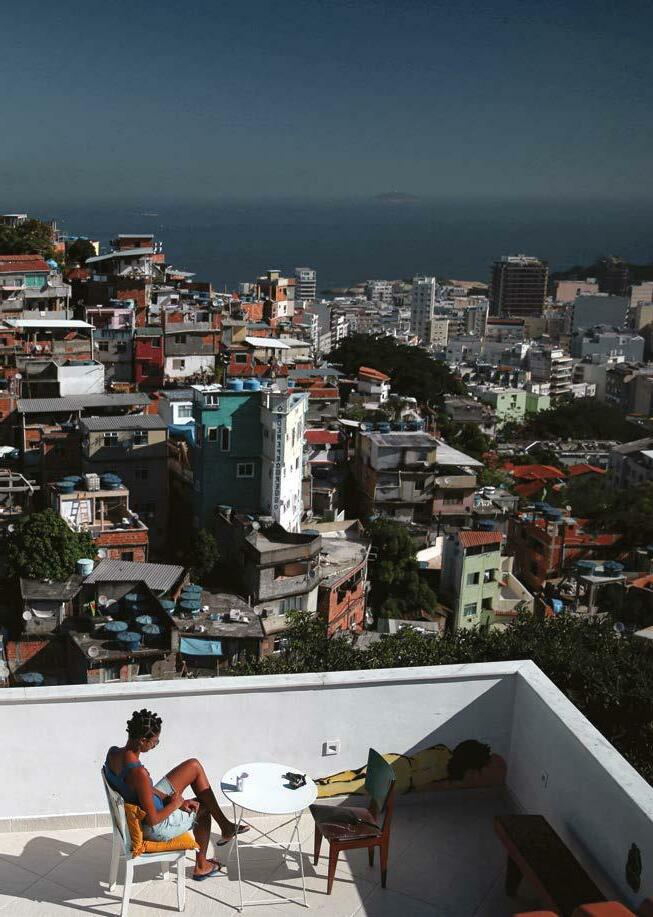
10 minute read
Spatial Asymmetry in the Contemporary City
Spatial Asymmetry in the Contemporary City
The development of our cities no longer follows a centre-suburb process, but rather an altogether more interconnected series of trajectories that establish equally numerous (and equally complex) “spatial asymmetries”.
Advertisement
BY SONIA STEFANIZZI — SOCIOLOGIST
Asymmetry dominates our contemporary landscape, shaping every part of the human experience and our relationship with the spaces around us. Indeed, when it comes to our cities, spatial asymmetry is the rule rather than the exception – it is their defining trait. Spatial hierarchies in contemporary cities are no longer the product of a relentless outward expansion from the urban centre, but rather they follow different trajectories. Processes of so-called “suburbanisation” can no longer be understood exclusively in the context of geographical marginalisation or distance from a defined centre. Research in recent years has shone a light on how interconnected processes of globalisation have not only affected economic, political, social and cultural life in the cities, but have even transformed their geographical layout. Contemporary cities no longer seem to pursue an unambiguous and fixed logic based on processes of space and time; the relationship between the centre and the suburbs is changing or, to put it more accurately, the traditional borders we recognised that distinguished between centre and suburb are increasingly fading out of existence.
If the idea of a centre has not yet been fully consigned to the scrapheap in the modern metropolis, it has undoubtedly been diluted, the original solitary centre broken down into its constituent parts (business centres, commercial centres, mass entertainment centres that have sprouted up beyond the boundaries of the traditional urban area). As a consequence, the “traditional” image of the suburb as an isolated social and cultural world within a residential area inhabited largely by minority communities, a boundary for the consolidated city characterised by homogeneity of financial circumstances, employment status and culture and challenges of social integration – is receding into the distance. The debate that has built up has invited reflection on the role of the suburb in the broader context of the city, and its representation as either a living and firmly intertwined element of it or as a place apart, set aside from its urban surroundings by an absence of social exchange and interaction. Rethinking the modern suburb means recognising its heterogeneous nature; a diverse patchwork of populations, residential streets mixed with council housing, modern infrastructure alongside temporary precarious housing for migrants, interstitial spaces. What seems to be interesting in the context of the transformation of our cities is the redefinition of the internal and external geography of the city limits and their acceptance as physical, political and symbolic devices.
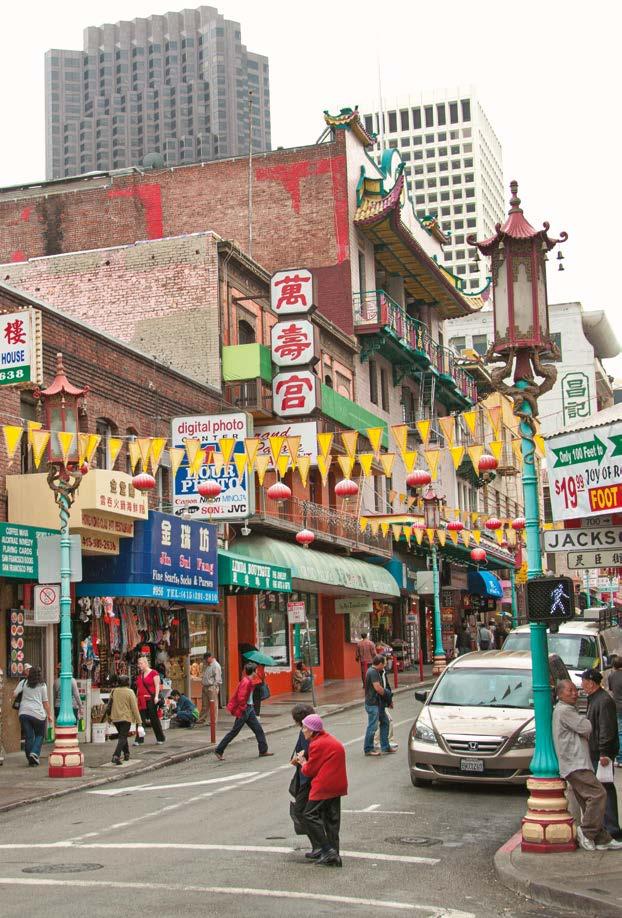
San Francisco’s Chinatown, in the heart of the city, has the largest Chinese community outside of Asia, and the oldest in the United States.
ALAMY / PETER HORREE
The social processes sparked by globalisation transform the arrangement of the space and the tempo of the city, changing many of its fixed variables, such as the central and suburban locations, with two consequences: on the one hand, expanding the territory of the city and redrawing its settled limits as a result; on the other hand, redrawing other borders far from their historic layouts and drawing new lines, connecting people, cultures and identities. The redefinition of the physical confines of the city in response to the urbanisation process of recent years has created a series of interstitial spaces; “overlooked” spaces that can be understood as a kind of area of liminality, extraneous to the prevailing flow of urban life, difficult to pigeonhole and viewed as neglected and in a form of “social suspension”, awaiting connection back to the established urban conventions.
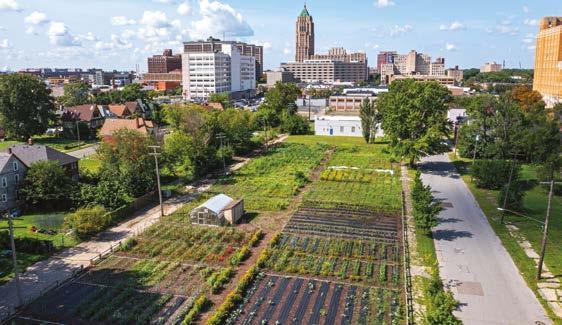
Detroit, Michigan - The Michigan Urban Farming Initiative, a not-for-profit farm in the centre of Detroit.
ALAMY / JIM WEST
Some studies have drawn parallels between this state of transition and the so-called “in-between” spaces – which are united by an identification with run-down and marginalised neighbourhoods of the contemporary city, often neglected by the authorities and populated by people with differing levels of financial and social capital, languages and means of expression, and often in direct competition for use of public spaces. Whilst their diversity of populations and living conditions make this definition somewhat amorphous, it is nonetheless possible to identify two prevalent types: the first is characterised by rail or industrial buildings/areas inhabited by a plurality of people with particular lifestyles or routines that monopolise the space, excluding others from being able to benefit from them. These spaces are contested by a range of new urban populations who use them for a diverse range of purposes. Specifically, these are spaces in which a culturally homogeneous group of people use them for purposes perceived by other parties to the urban space as inherently incompatible with other uses and therefore best avoided.
A second type of space recalls an urban and residential configuration from another era, the functional and symbolic importance of which has been infused with new meanings. In this case, the meeting of old and new populations creates communication breakdowns between urban cultures with different codes of conduct in their use of the space. One shared element of these new spaces is the conflict, however muted, between the residents; conflict that arises from differences in lifestyle, cultural codes, use of the urban space and interactions with other parties within it. It is as a result of the different value and meaning that they take on that these spaces within the city become contested battlegrounds among the residents. But how is the relationship between space and resident populations defined? One approach posits that there is no such thing as a “difficult” place, an unchosen social space, that brings together people without presenting points of contact, forcing them to cohabit “either in mutual ignorance and incomprehension or else in latent or open conflict—with all the suffering this entails” (Bourdieu 2015).
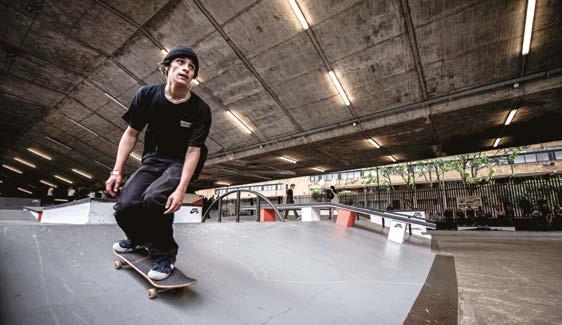
Bay Sixty 6 - London Skatepark, illuminated beneath the Westway. A perfect example of “in-between space”. ALAMY / PETER HORREE 54 ASYMMETRIES
FLICKR / MOHAMED ERSATH
SOCIAL ASYMMETRY: SHIFTING IDENTITIES. THE CASE OF MILAN
The urban system is configured like a great network of interconnected spaces with its greatest strengths in the urban hubs. Cities become part of an urban system which no longer follows a logic of territorial continuity, but rather is structured as a series of hubs (urban centres) and axes (flows of goods, people, capital and information) that connect them. Within this shifting framework, the emerging trends in the city – that can be summed up as fragmentation, complexity and fluidity – have a profound impact on the continuity and significance of the relationship between the residents and their local environment.
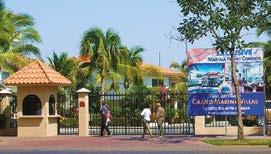
The entrance to the Paradise Village Grand Marina Villas gated community at the Paradise Village Resort, Nuevo Vallarta, Nayarit, Mexico. Security guard outside the 964-acre private gated community of St George's Hill in Weybridge, Surrey.
WIKIMEDIA / COOLCAESAR
This is increasingly reinforced by new borders that isolate or interrupt the flow of communications and resources between the different constituent parts of the contemporary city, creating new inequalities and disparities between areas and the people who live in them. In cities that are increasingly globalised, poverty, marginalisation and differences are being concentrated and sometimes segregated in the suburbs or in run-down neighbourhoods, creating powerful social polarisation within urban spaces; setting rich against poor and “indigenous” residents against outsiders. New metropolitan models of socio-territorial organisation are emerging in place of the traditional forms of urban society – the neighbourhood, the community. The space layout has a powerful influence on the identity of its residents, as the social relationships and practices shape space in turn. Space should not be considered an objective fact, but rather as a condition for the existence of social organisations; a property that belongs to society. Spatial forms are therefore best understood as the configurations of social relations that find their tangible expression in the space. This is why we believe that the concept of the neighbourhood should not be predetermined, but rather represent a space, and arise from the interplay of different subjects and processes, each in turn bearer and creator of different identities. An urban space, a “neighbourhood” represents the stratification of different identities, either defined or imposed from the outside on the basis of the impressions of their context.
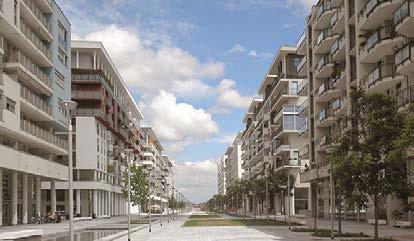
Via Bruno Cassinari, Milan (Santa Giulia neighbourhood).
WIKIMEDIA / ARBALETE
Even if certain aspects of the spatial layout can be identified, and perhaps even clearly so (e.g. the urban fabric, the common building style, the historical processes that informed its construction, etc.), and even if these often act as the point of reference for its residents or those who frequent it, a “neighbourhood” remains a difficult thing to define. If we turn our analysis to Milan, certain urban spaces such as Gratosoglio and Rogoredo-Santa Giulia are prime examples of the situation described above. These spaces are highly heterogeneous in terms of their social makeup, diverse not only from the residents elsewhere in the city but also within and among the residents of the spaces themselves. A recent study carried out in the “neighbourhoods” of Gratosoglio and Rogoredo-Santa Giulia highlighted that it was impossible to consider them in terms of isolated and distinct local communities based exclusively on endogenous social relations. The identities based on the localities intersect with other identities.
Social memories, historic identities, as well as urban routines shaped in the course of daily life can all represent other significant sources. The residential neighbourhood can be one of many lived worlds for people, where they can choose if and to what extent to participate in public life, forge social bonds and leave them in cases where local circumstances are less favourable, or where interest or motivation wanes. It is also widely known that certain residential or living models are often “imposed” within cities, and that these can later impact the makeup of the local urban identity. The place of residence may not be entirely a choice; it can be highly dependent on the urban situation and the dynamics of the real estate market. There are those who can afford to choose where they live: in such cases, the decision becomes an important identifier – perhaps the most important – of the nature of the individual. The process of narrowing down options that leads a person to decide to live in certain places and discard others is at the heart of the contemporary struggle for social distinction. Place of residence therefore becomes an important factor in signalling social identity and establishing the life opportunities of the residents of the city.
The search for a residential environment that feels comfortable, in relation to established habits, adds a form of “elective belonging” to the residential context, with a new status conferred that is recognised by the individual and those around them. This phenomenon, typical of a residential area such as RogoredoSanta Giulia, is evidence of a process defined in the literature as “enclavism” of the middle-upper classes. The search for social homogeneity pushes the middle-upper classes to seek socially and culturally homogeneous, “protected” residential surroundings that provide the illusion of community life (such as gated communities). Some of this tendency can be found in Santa Giulia, built with this demographic target in mind. The risk that follows is that the city is carved up into a space of homogeneous enclaves, each of a different kind and with differing levels of isolation: from gated communities to enclaves of socially disadvantaged groups confined in run-down urban spaces.

Sonia Stefanizzi — Full professor of sociology at the Department of Sociology and Social Research at the University of Milano-Bicocca. Head of the Department of Sociology and Social Research since October 1, 2021. Teaches undergraduate and masters’ courses in sociology and on the PhD programme in Analysis of Social and Economic Processes (ASEP). Former scientific coordinator of the Methodology Department of the Italian Institute of Sociology, director of the master’s degree programme in Analysis of Social Processes and member of the Academic Senate of the University of Milano-Bicocca. Coordinated various national and international research projects with competitive tenders, and her research interests are in the fields of epistemology, research methodology,










